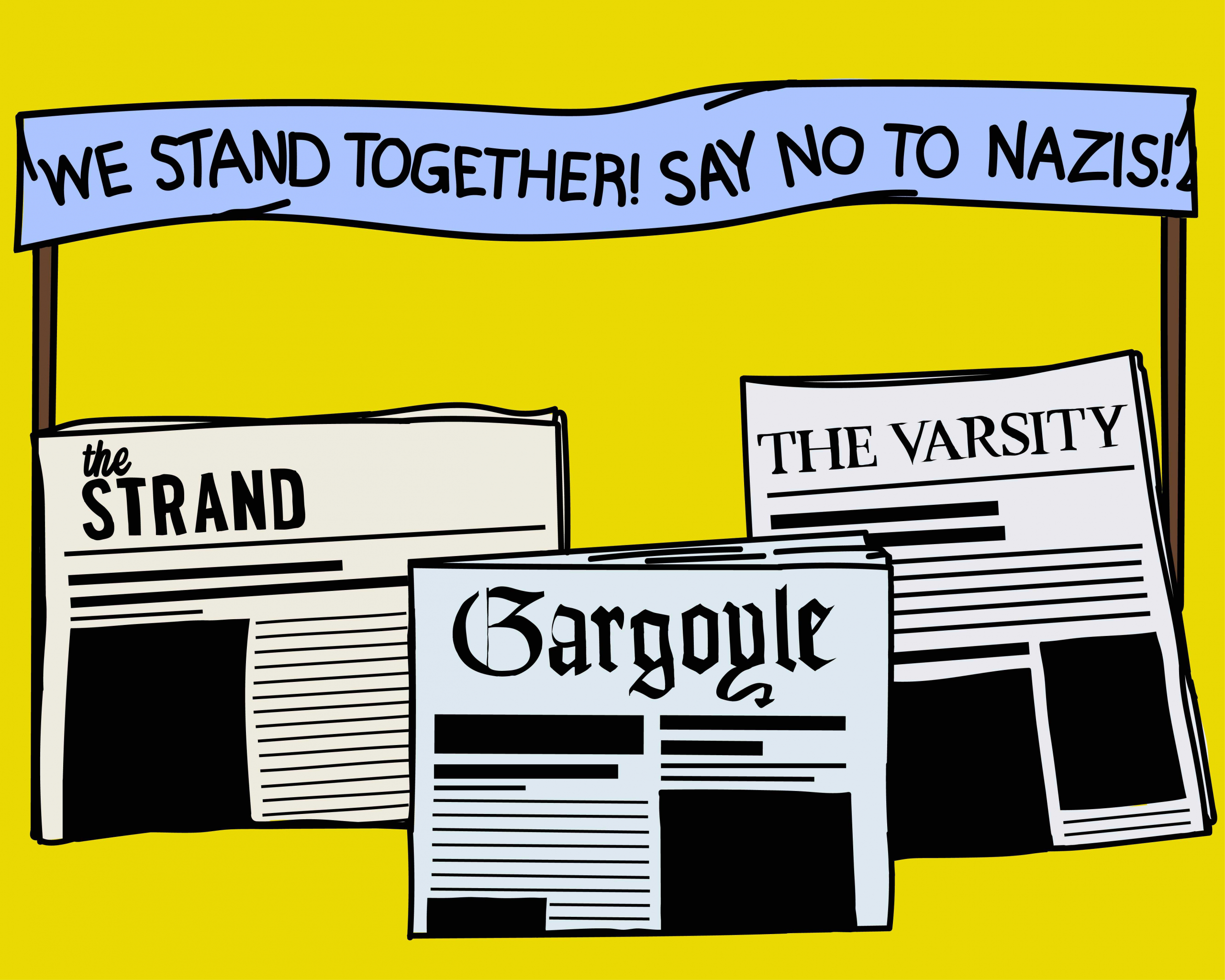The conflict in Charlottesville continues to occupy a prominent place in the news. Earlier this summer, the hatred and violence that transpired at the Unite the Right rally prompted condemnation from most mainstream sources.
At U of T, after The Gargoyle issued a statement condemning white supremacy and Neo-Nazism in all forms, other major student publications were prompted to do the same. In general, the way media sources have responded to hatred has sparked controversy over the nature of neutrality and bias, and whether there is a place for social activism in journalism.
Definitively, neutrality is a key factor of the journalistic process. This is because journalism, at its core, is a truth-seeking process: the practice requires making honest observations and conducting analyses of the way things really are.
The Gargoyle and other publications are fully justified in condemning white supremacy and other deplorable ideologies. White supremacy is an idea that violates the core principles we as members of society ought to share: it cuts across partisan divides, and runs counter to the very foundations of our political discourse, which are based on equality and respect.
At the same time, publications who condemn white supremacy should also make the effort to understand where it comes from. Alongside elements of hatred, what happened in Charlottesville was an expression of anger from those fearful of the unknown, and isolated by rapid economic and social change. Given the truth-seeking exercise underlying the journalistic process, we should not hesitate to investigate the nuances of these conflicts.
Sam Routley is a third-year student at St. Michael’s College studying Political Science, History, and Philosophy.


